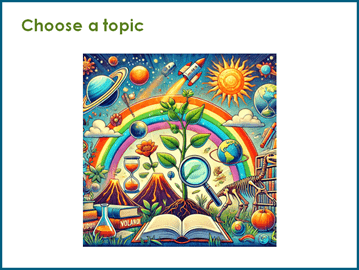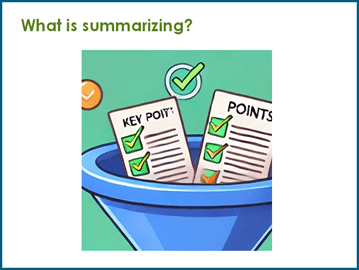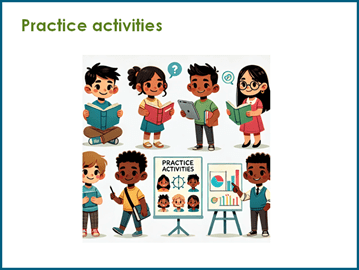Introducing elementary school students to basic research and summarizing information can be fun and engaging. The goal is to teach them the fundamental skills of gathering information, understanding it, and summarizing it in a simple and clear way. Here’s a structured approach that can help:
Explain research
What is research? Research is like solving a puzzle. It's when we look for information about a topic we don’t know much about. We can find information in books, on the internet (with supervision), or by asking experts.
Why is Research Important? Research helps us learn new things, understand the world better, and find answers to our questions.

Choose a topic
Encourage them to pick a topic they are curious about. It could be anything from "How plants grow" to "What makes a rainbow?" Having a topic they’re interested in keeps them motivated.
If it’s for a school project, guide them to focus on one question or aspect of the broader topic.

Where to find information
Books: Introduce them to the library or their class’s reading corner.
Educational websites: For younger students, websites like National Geographic Kids or Time for Kids can be great resources.
Asking questions: Teach them that asking their teacher or family members can also be a way to gather information.

Evaluate information
Is it simple? Teach them to look for sources that use language they can understand.
Is it true? Emphasize that not everything they find is accurate, so they should check that the information comes from a good source (like a trusted website, book, or teacher).

Summarize
What is Summarizing? Summarizing is like telling a friend the most important parts of a story. You leave out the details and only share the main points.
Steps to Summarizing:
Read or listen carefully: Make sure they understand the information first.
Highlight the key points: Guide them to pick out the most important facts or ideas. They can underline or note down these points.
Use their own words: Encourage them to rephrase the information in a way they understand. It doesn’t need to be perfect, just close enough to the original.
Keep it short: Teach them to keep summaries short—just a few sentences that tell the main idea.

Practice activities
Mini research projects: Assign simple research projects where they gather 2–3 facts about a topic (e.g., an animal, a place, or a historical figure) and summarize it in a short paragraph.
Summarizing stories: After reading a short book or watching a video, ask them to summarize it in a few sentences.
Research and share: Have them research a fun topic (like their favorite animal) and share their summary with family or friends.

Use visual aids
Graphic organizers: Use simple charts like KWL (Know, Want to know, Learned) or webs to help them organize their thoughts.
Posters or slides: Encourage them to create visual projects with their summary, using drawings or simple digital tools like PowerPoint.

Model the process
Demonstrate how you would research and summarize something. For example, look up a simple fact about dinosaurs and show them how to turn the information into a summary.

